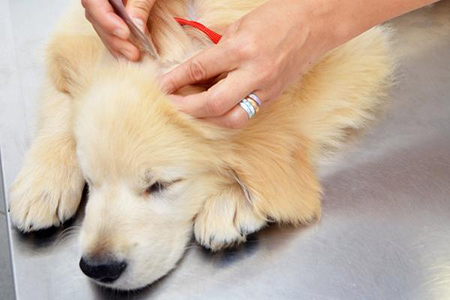Top Tick Stories 2017

Top Tick Stories 2017
Increase in Lyme Disease Cases for 2017
According to the Companion Animal Parasite Council, canine Lyme disease is expected to expand beyond its traditional geographic boundaries in 2017. In states like New York where the disease is endemic, the number of cases will increase, thanks to a bumper crop of white footed mice, the efficient vectors of the Lyme disease-carrying Ixodes scapularis tick. Because humans and dogs can contract Lyme disease, it is going to be a tough season for all.
Powassan Virus Makes its Mark in 2017
This rare tick-borne virus made NYC metro news this spring when a young Connecticut child was diagnosed with Powassan virus disease. In our area, this virus is spread by the same tick vector as Lyme disease. Powassan virus, first identified in Canada, causes neurologic signs and can be fatal. Fortunately, the Connecticut child recovered without major long-term effects. To date, there is no information indicating dogs and cats can be affected by this virus, but without tick prophylaxis, your pet could inadvertently expose your family to ticks carrying this deadly virus. Preventing ticks on your pet makes your family safer.
Forecasting Lyme Disease
One bright spot in the nasty tick predictions for 2017 is how dogs are impacting Lyme disease forecasting. Though very complicated math,
![]()
scientists determined results of pet dog blood tests for Lyme disease in past years can forecast the occurrence of the disease in the upcoming year. This helps to alert veterinarians about the geographic expansion of Lyme disease into new areas, helping us to better prevent and diagnose the disease. Since we share outdoor activities with our dogs, the information also helps physicians to diagnose Lyme disease early.
News to Use
The continuous geographic expansion of tick-borne diseases makes protecting ourselves and our pets from tick attachment more important than ever. A three-pronged approach is necessary: manage the environment, prevent tick attachment, and remove ticks promptly and completely.
- To reduce tick habitat, keep grass and bushes in your yard trimmed and clean up dead leaves and branches.
- Talk to your veterinarian about what tick prevention products work in your locale and would be best for your pet. Collars, pills and top spot preventatives are all very effective.
- Check yourself and your dog for ticks after spending time outdoors. Use tweezers or a specially designed tick remover tool to remove both the body and the head of the attached tick.

































